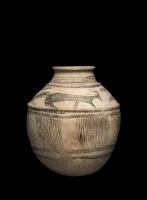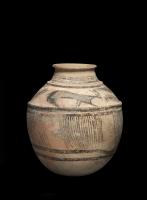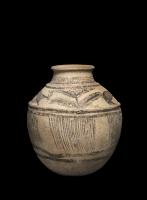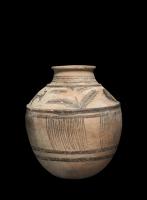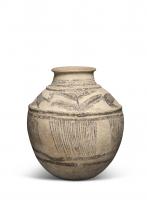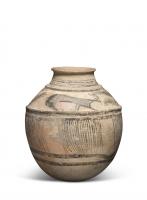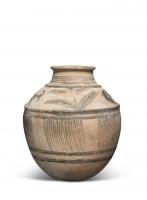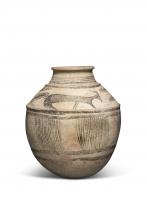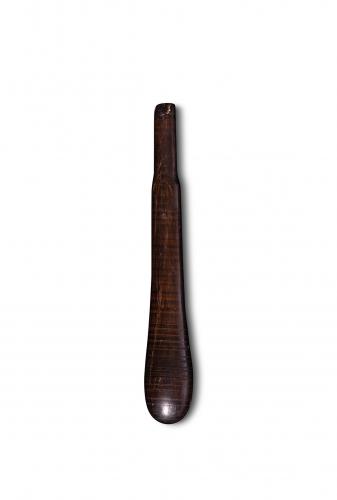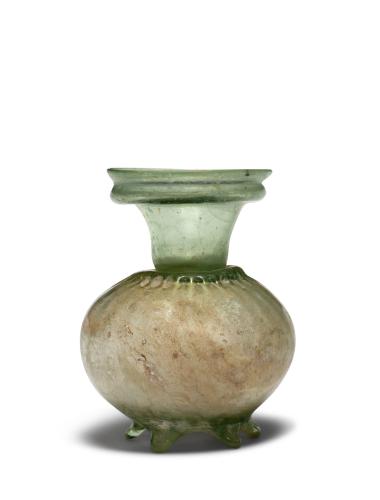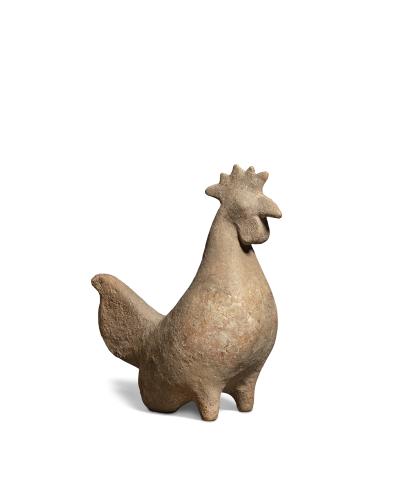
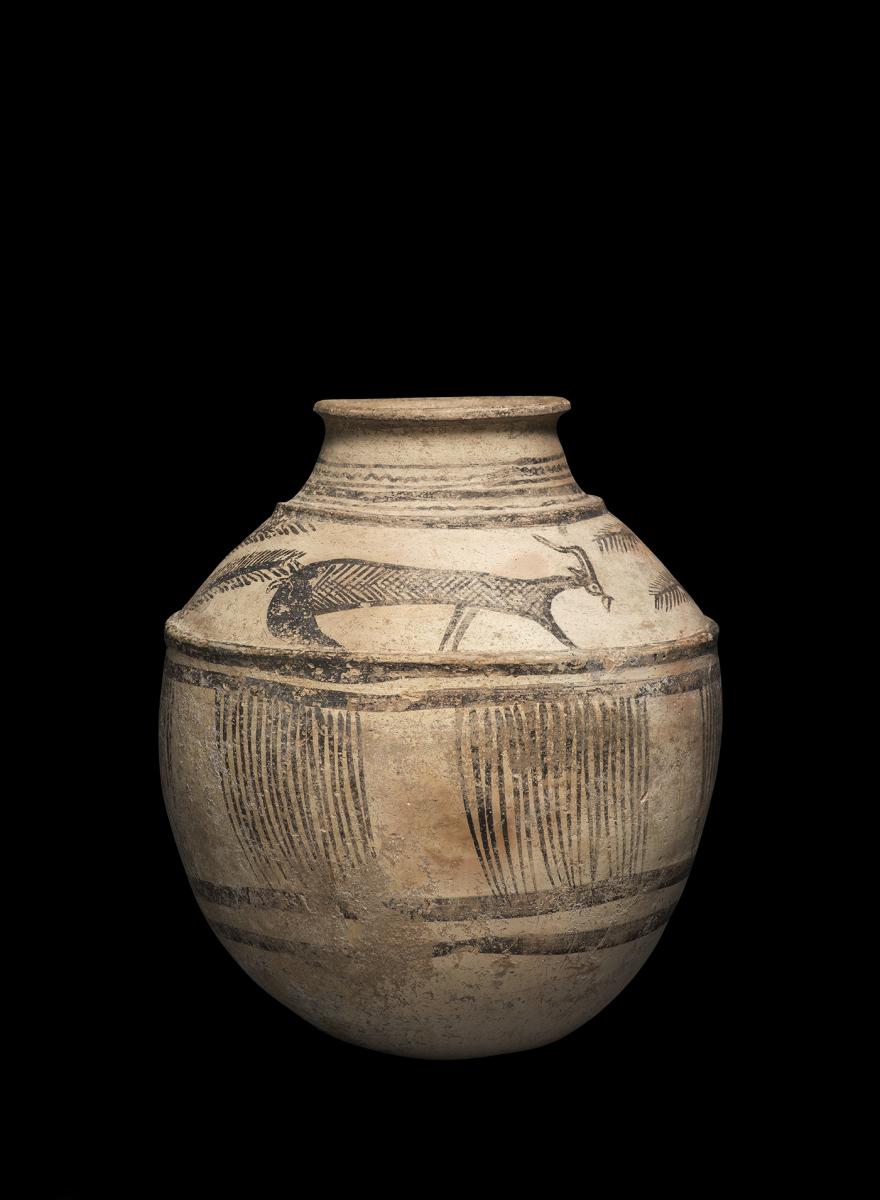
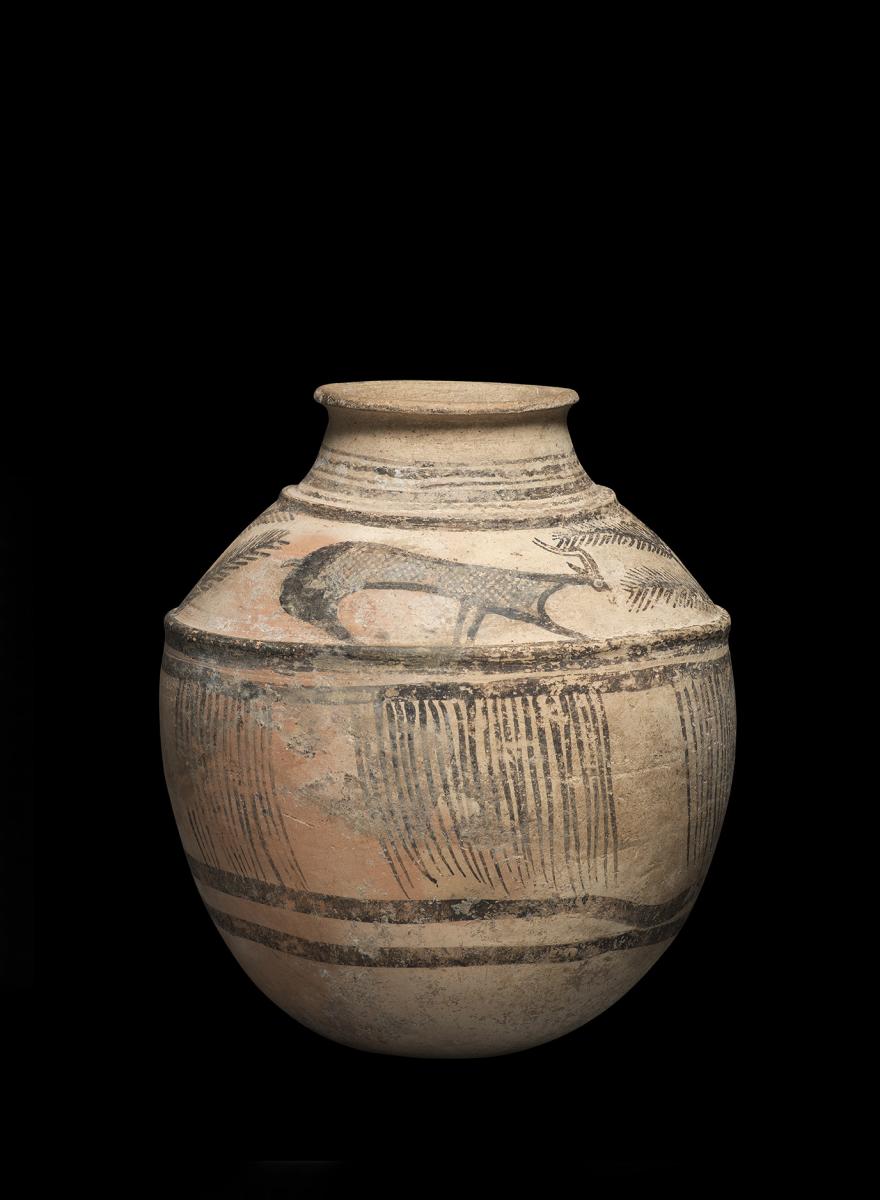
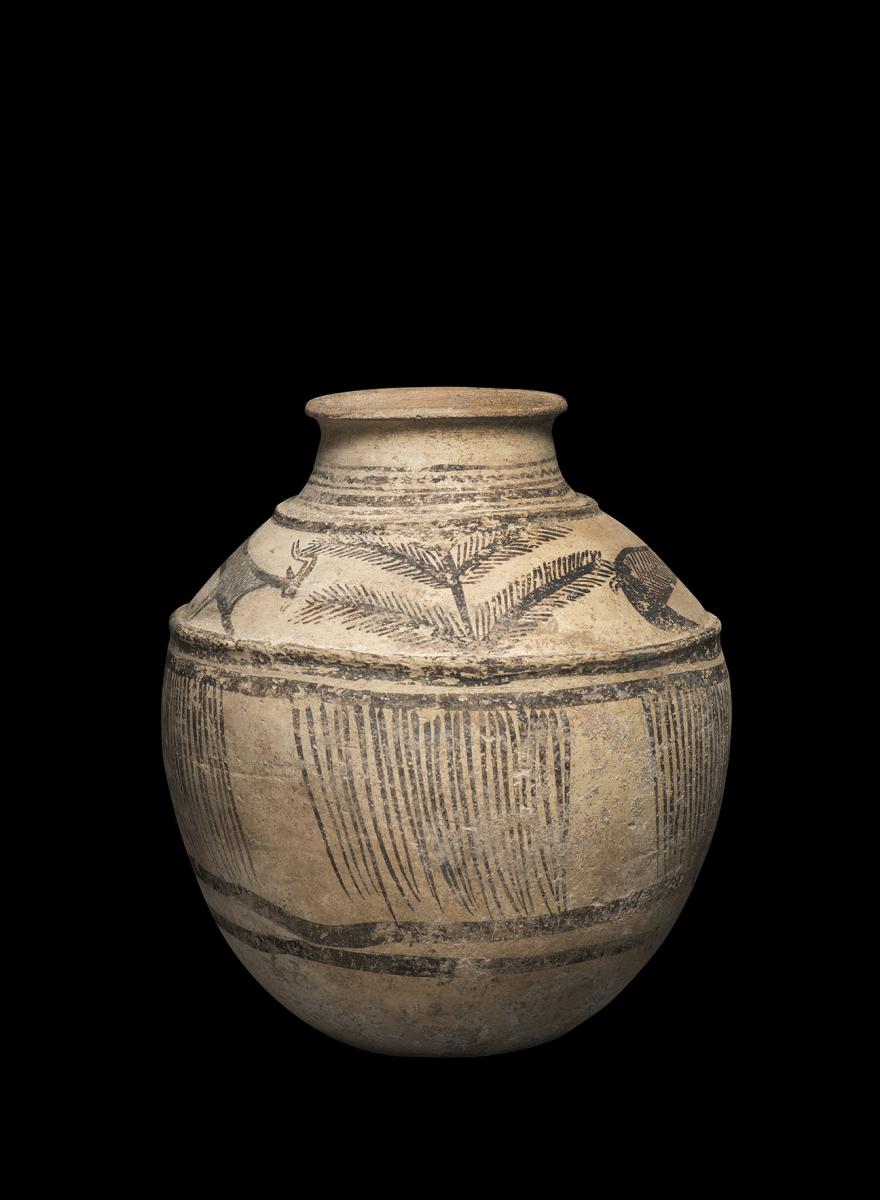
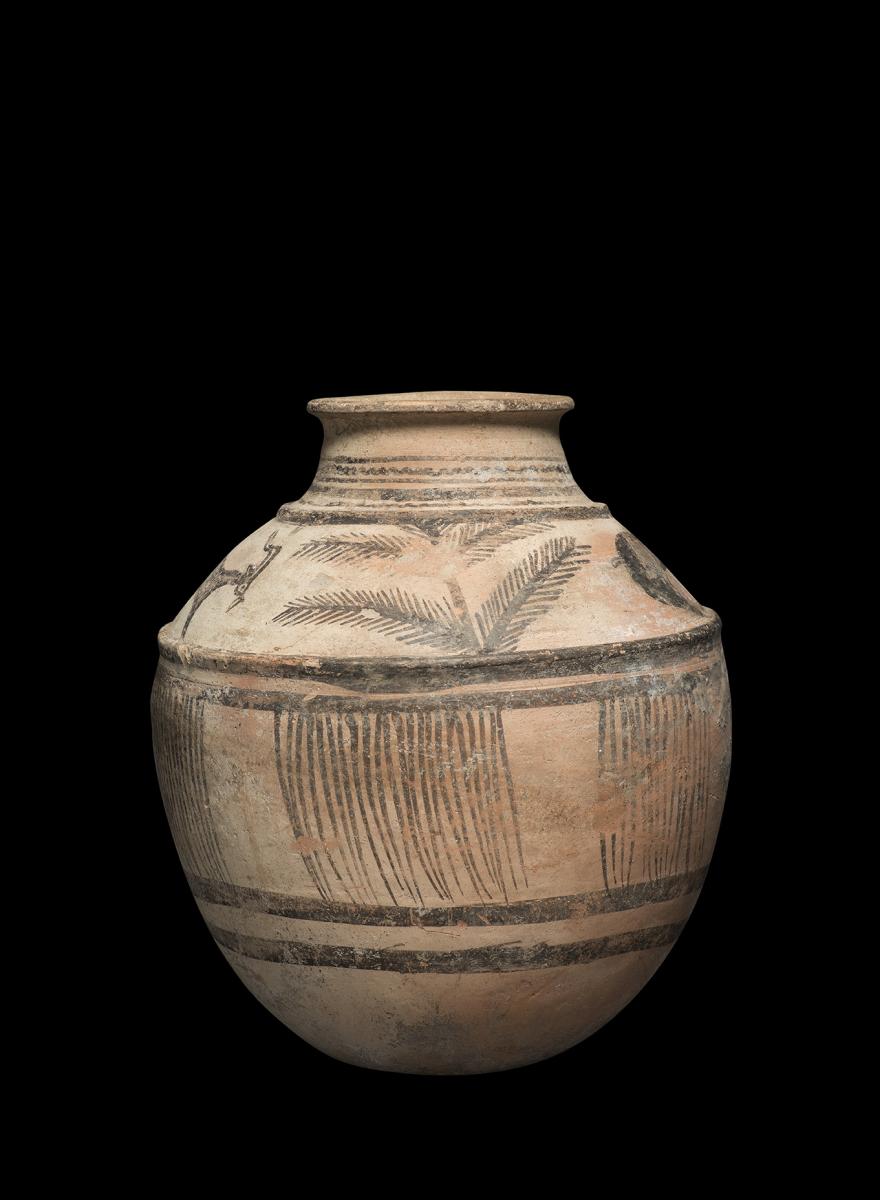
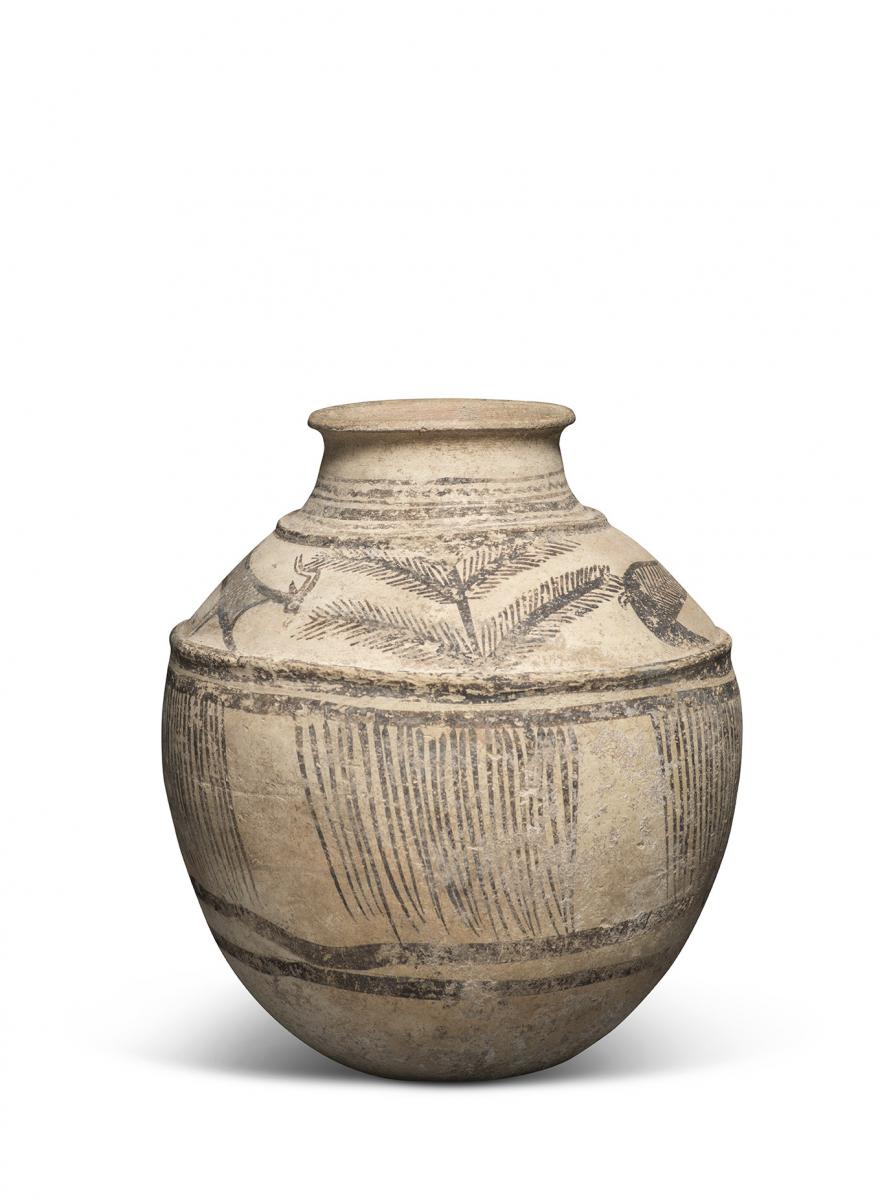
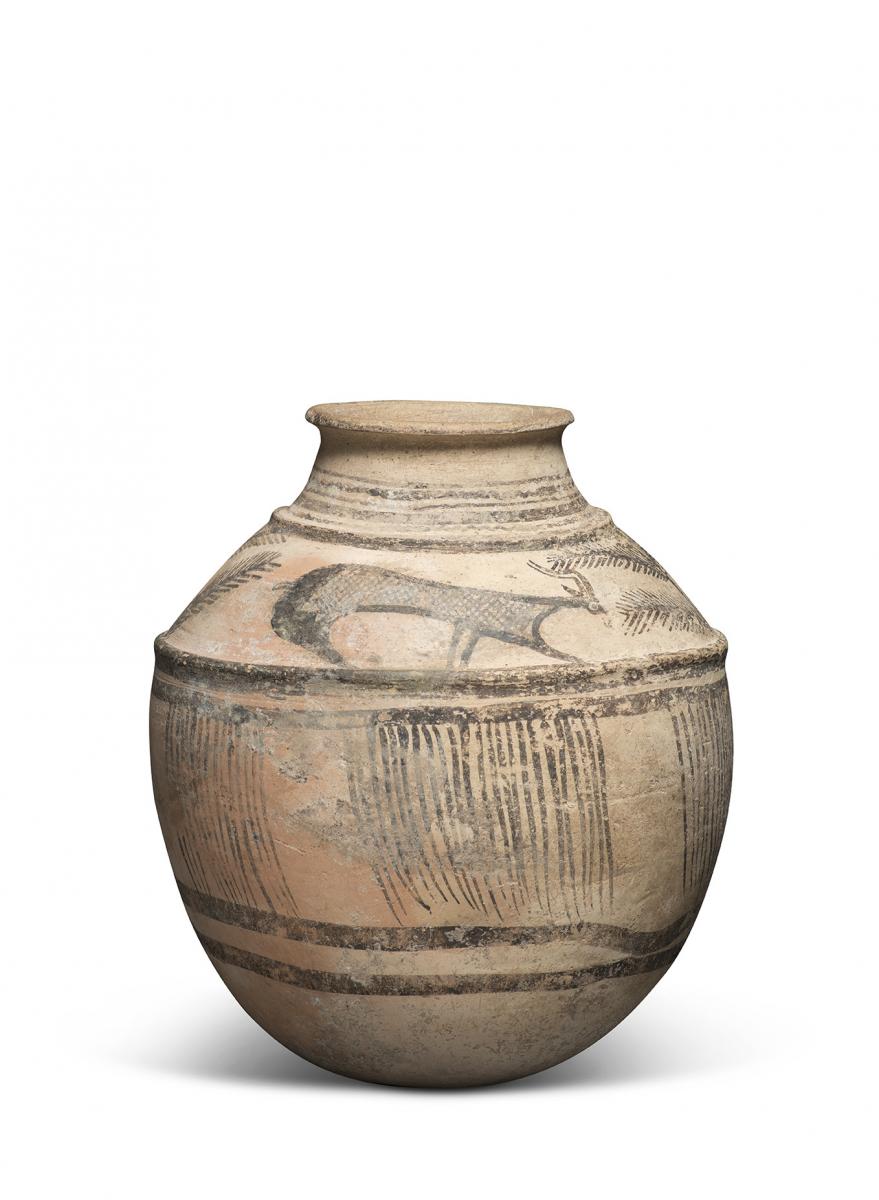
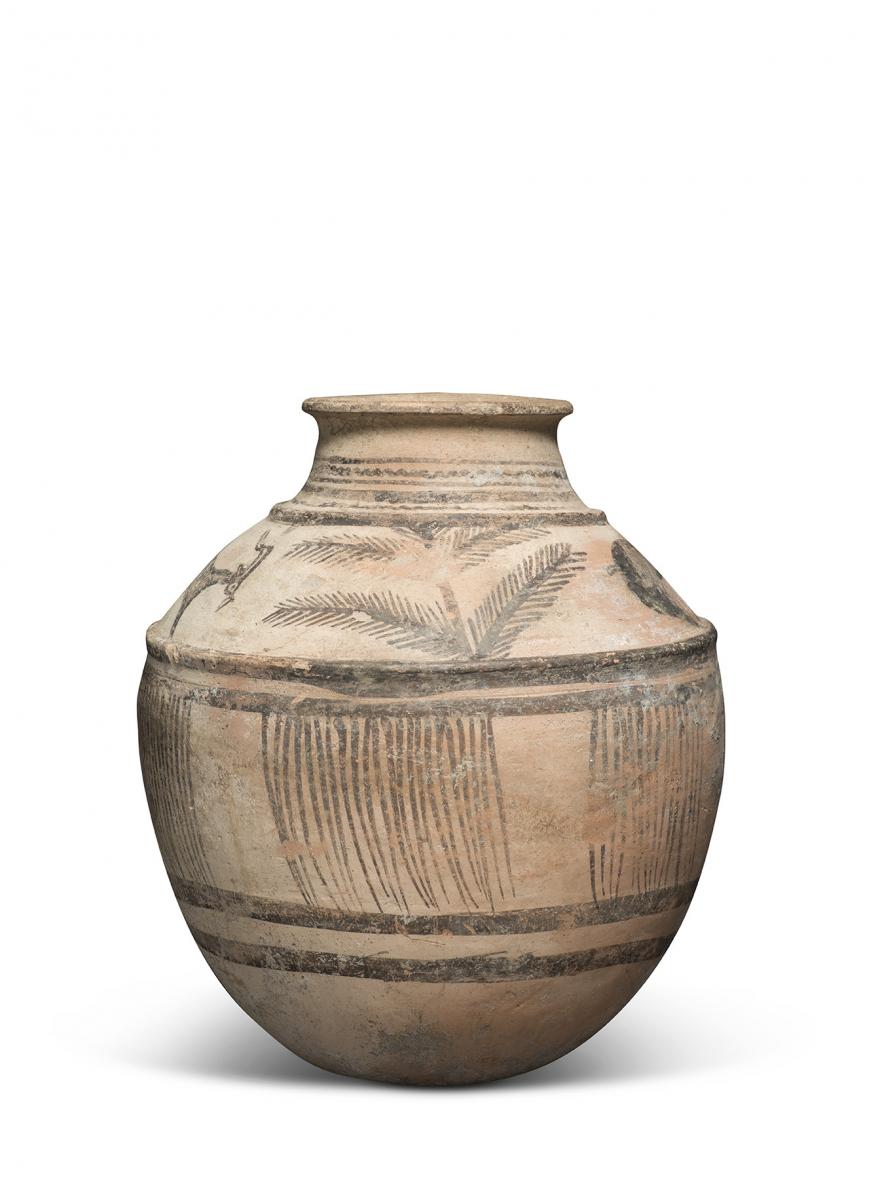
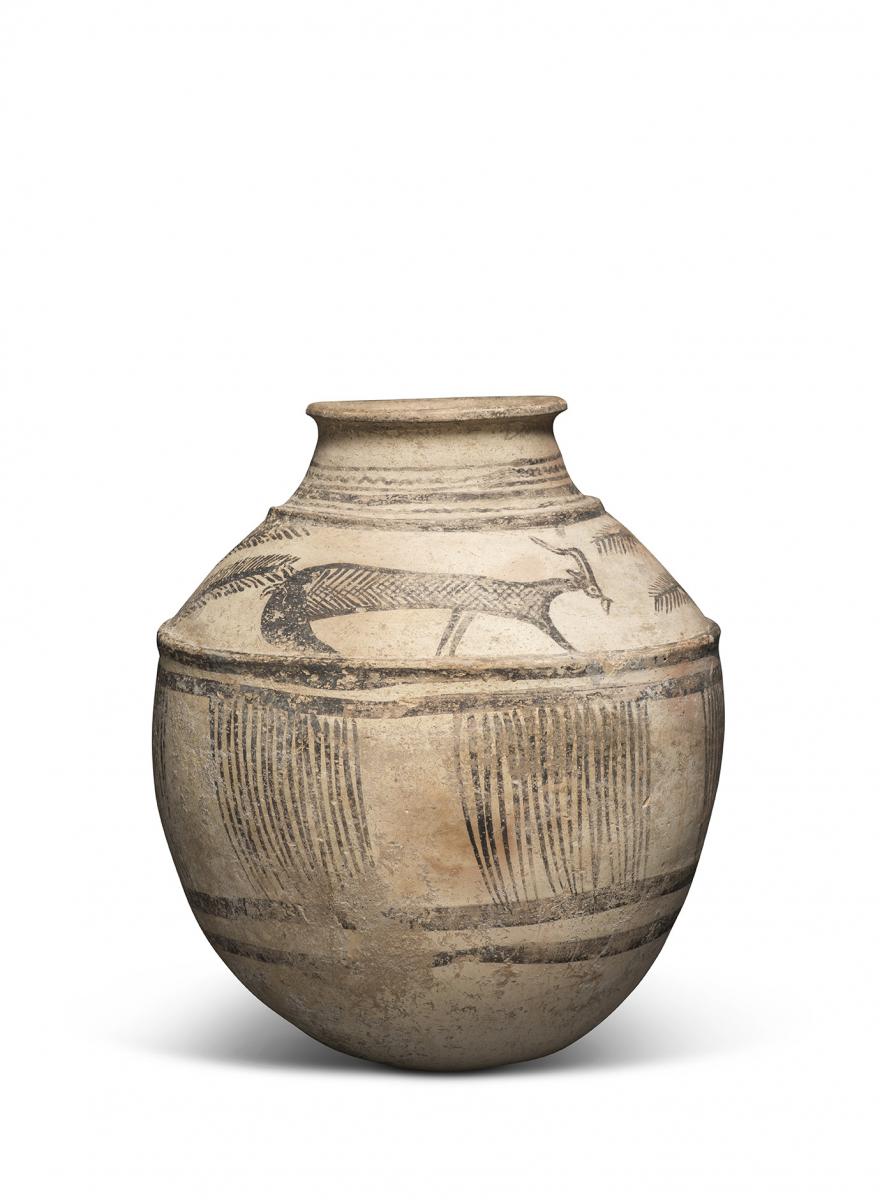
Price
£7500.00This object is eligible for a Certificate of BADA Provenance
The BADA Standard
- Since 1918, BADA has been the leading association for the antiques and fine art trade
- Members are elected for their knowledge, integrity and quality of stock
- Our clients are protected by BADA’s code of conduct
- Our dealers’ membership is reviewed and renewed annually
- Bada.org is a non-profit site: clients deal directly with members and they pay no hidden fees
Elamite jar with goats and palms.
Susa region, Iran.
Mid 3rd millennium BC.
Terracotta.
The large vessel of carinated form, rounded towards the flattened base, has an upward sloping shoulder and a conical neck. Enlivened by three horizontal thickened ribs; at the shoulder, before the neck, and at rim.
Painted with black slip on a cream-white background. The shoulder has two striding goats, each separated by a tree with pairs of branches reaching up and outwards.
The body has sections of thin vertical lines, bordered by a pair of solid bands above and below. Repaired from large pieces with two small lacunae.
Provenance
Dr Hans (1900-1967) and Marie-Louise Erlenmeyer (d.1997), Basel, Switzerland; acquired mid 20th century
An old label under the base reads “Erlenmeyer Basle”.
Literature
More commonly found are examples without the thickened ribs. For jars with these ribs compare L. Vanden Berghe, Archéologie de L'Irān Ancient (Leiden, 1959), pl.123,c. Also an example at the Metropolitan Museum of Art, New York, USA, acc.no. 43.89.13.
Dimensions
35 x 28cmStock number
10767The BADA Standard
- Since 1918, BADA has been the leading association for the antiques and fine art trade
- Members are elected for their knowledge, integrity and quality of stock
- Our clients are protected by BADA’s code of conduct
- Our dealers’ membership is reviewed and renewed annually
- Bada.org is a non-profit site: clients deal directly with members and they pay no hidden fees


